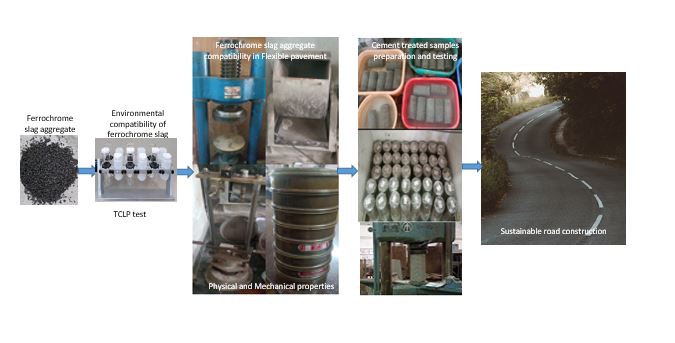
In this study, an attempt was made to characterize ferrochrome slag as cement-bound layers of flexible pavement in view of its leaching behavior. Toxicity Characteristic Leaching Procedure (TCLP) test was conducted to assess the mobility of toxic elements in ferrochrome slag. Ferrochrome slag aggregate was classified as a non-hazardous material that has good physical and mechanical properties. The standards for cement stabilization set forth by the MoRTH can be met by two gradations, ferrochrome slag(F) and quarry dust(Q) in the ratios of 70/30 and 60/40(F/Q) respectively. Cylindrical specimens of cement contents (2%, 4%, and 6% dry weight, respectively) were cast at optimum moisture content and maximum dry density for 7 and 28 days of curing to perform unconfined compressive strength. The cylindrical specimens are subjected to a series of cycles consisting of alternative wetting and drying, and the corresponding weight loss for each cycle is recorded in order to evaluate the effect of subsequent cycles. The strength of cement-treated ferrochrome slag and quarry dust mixtures was measured before and after they were subjected to durability testing. The cement-treated F60Q40 mix showed better performance than the F70Q30 mix and it can be efficiently utilized as a replacement for granular sub-base and base courses of flexible pavement, thereby reducing leaching and environmental pollution.
Total file downloads: 11